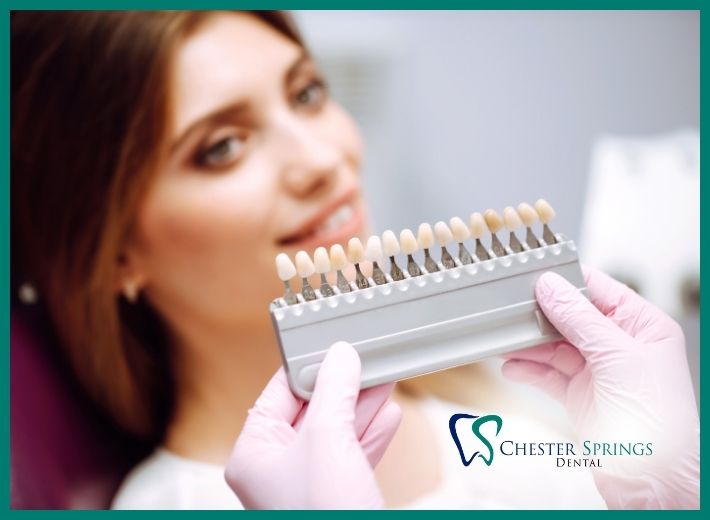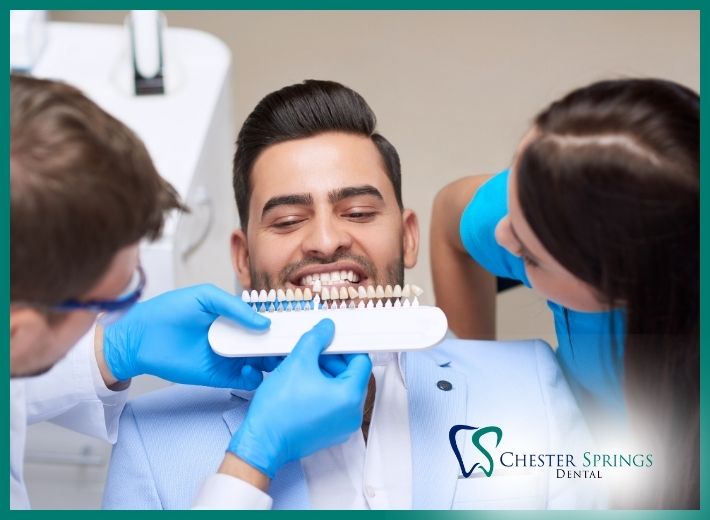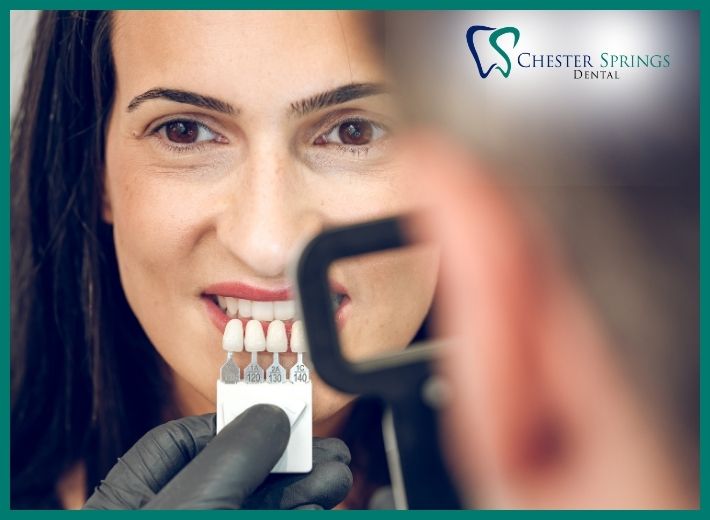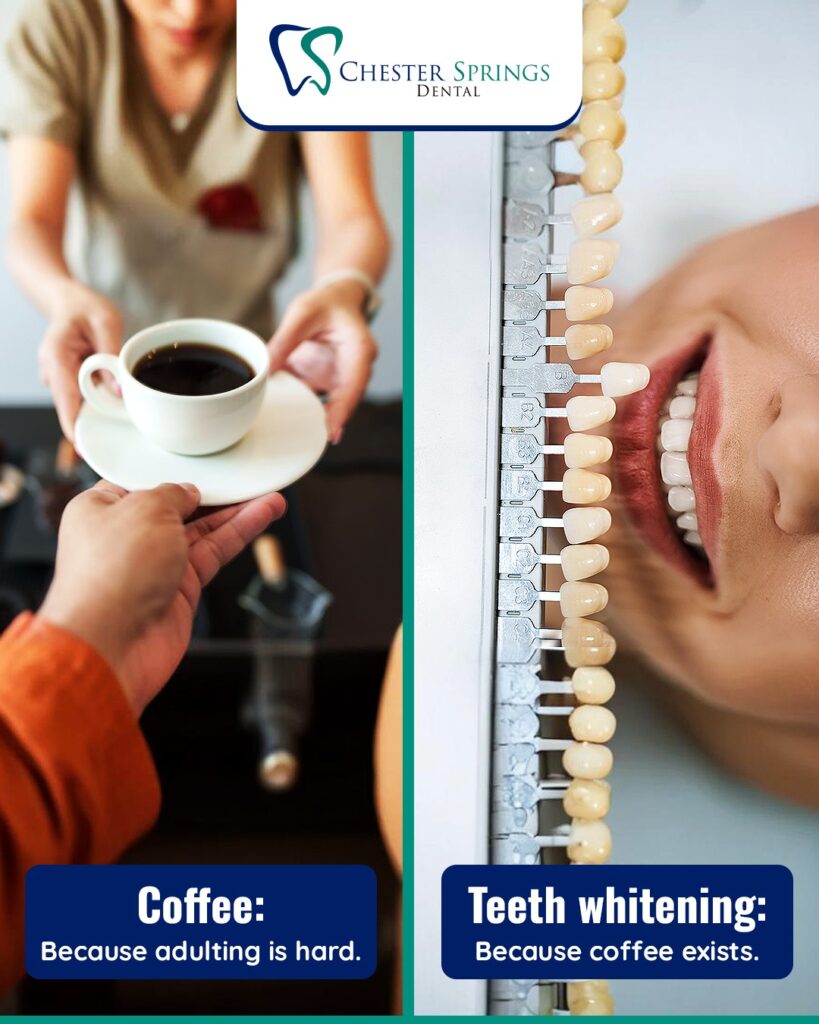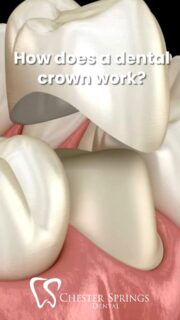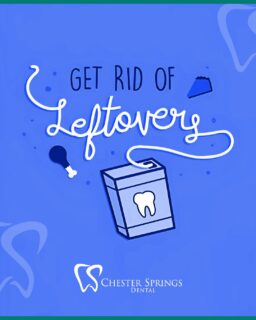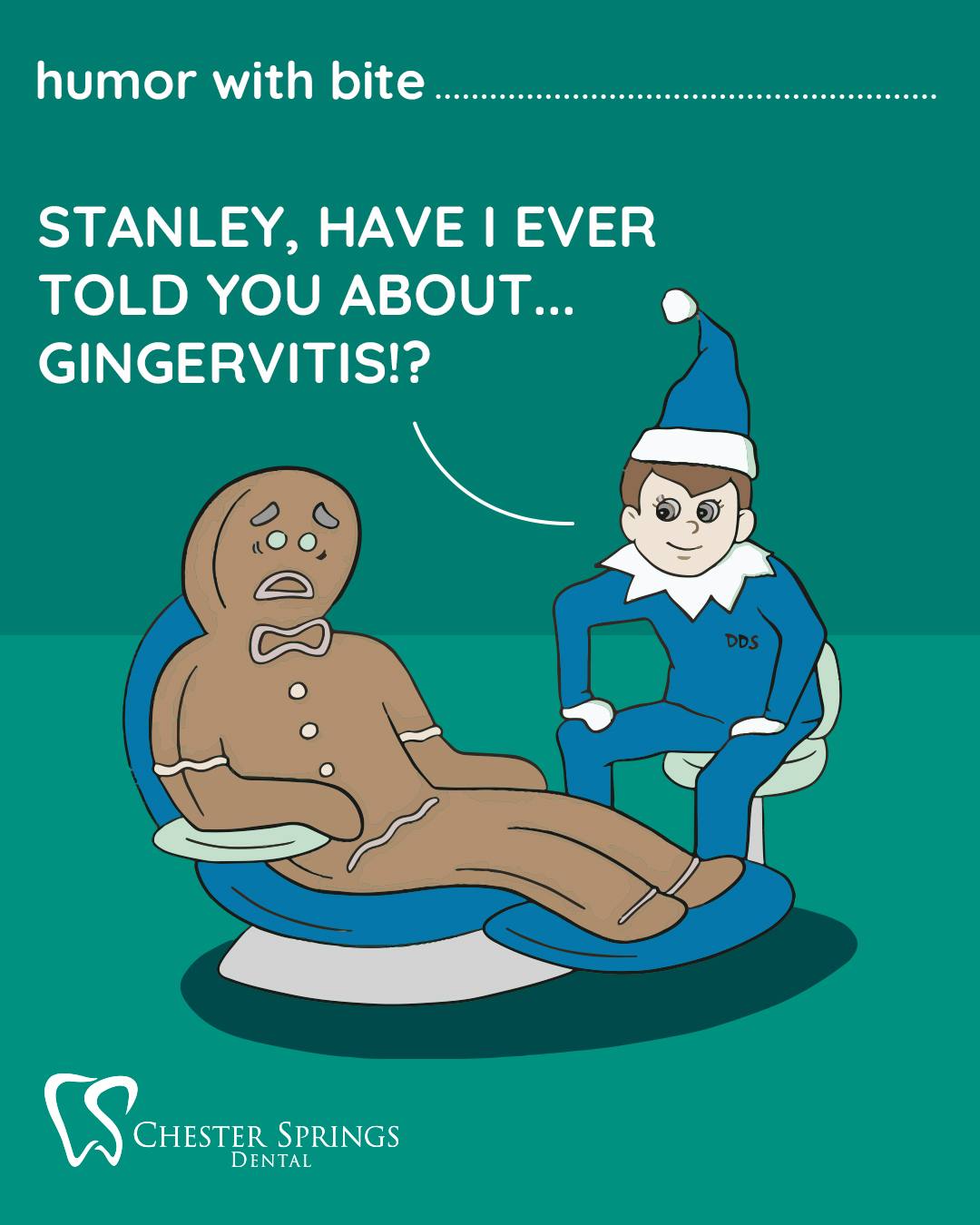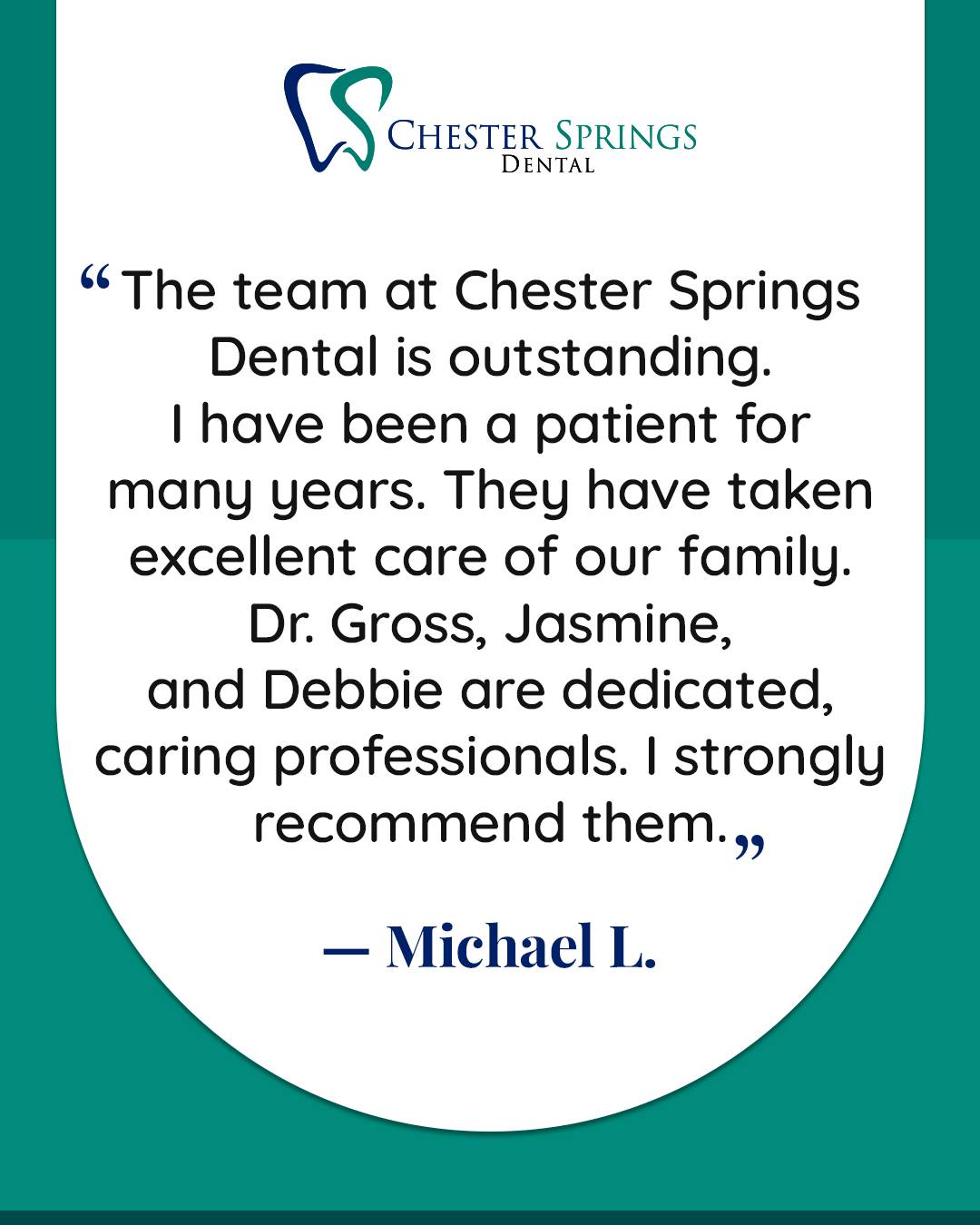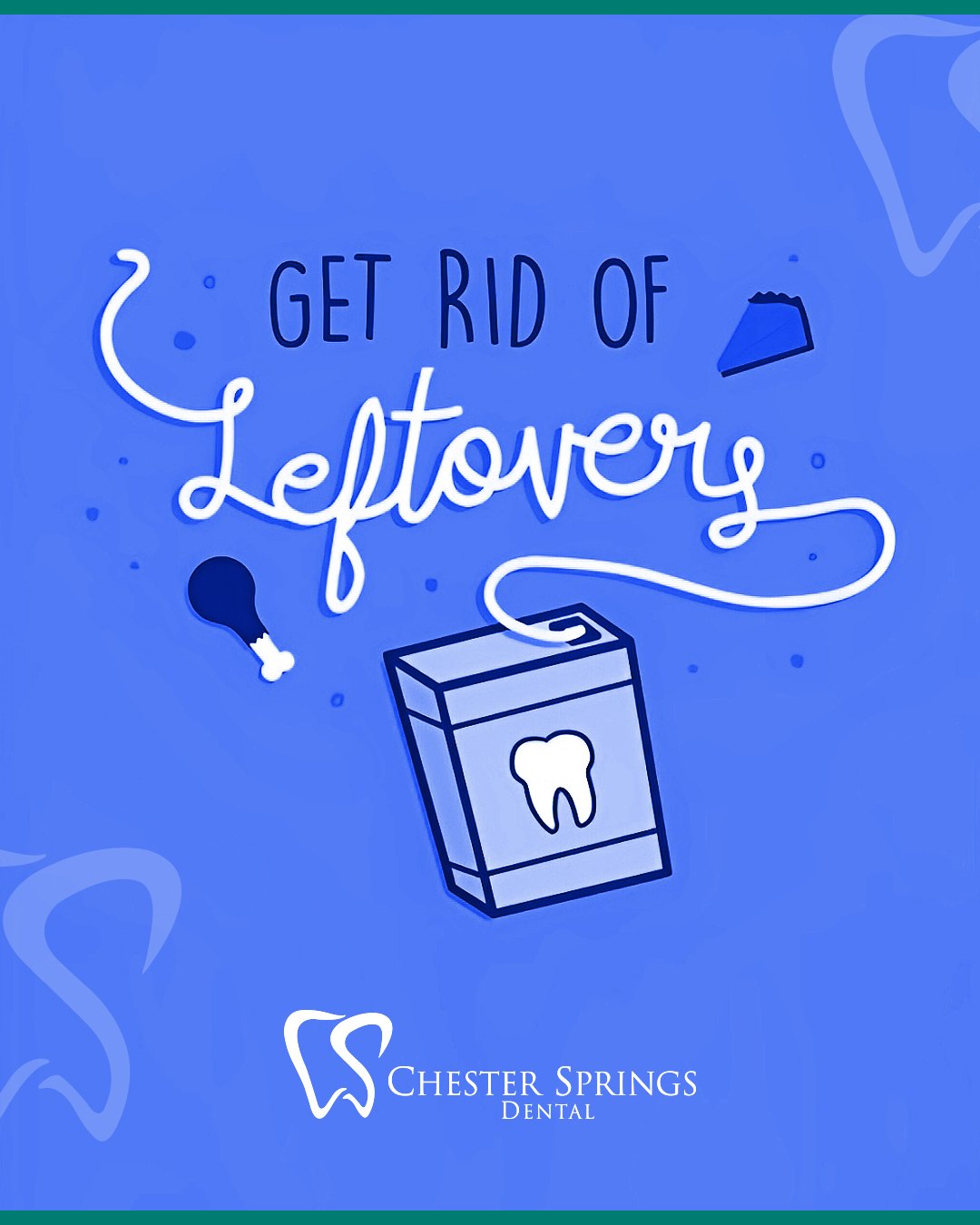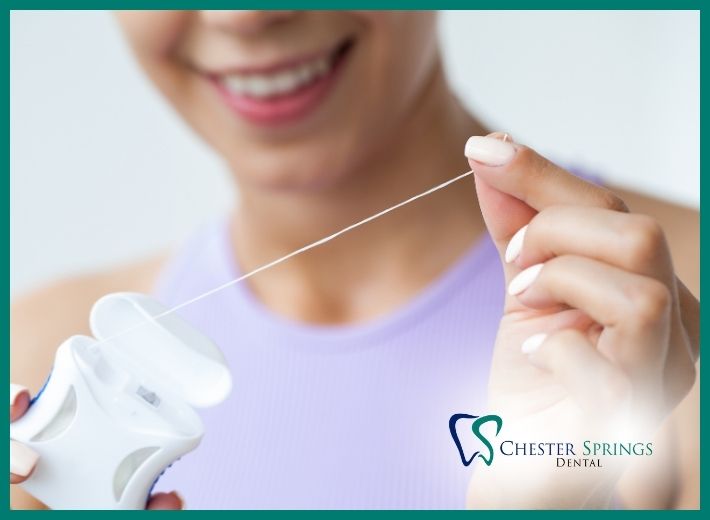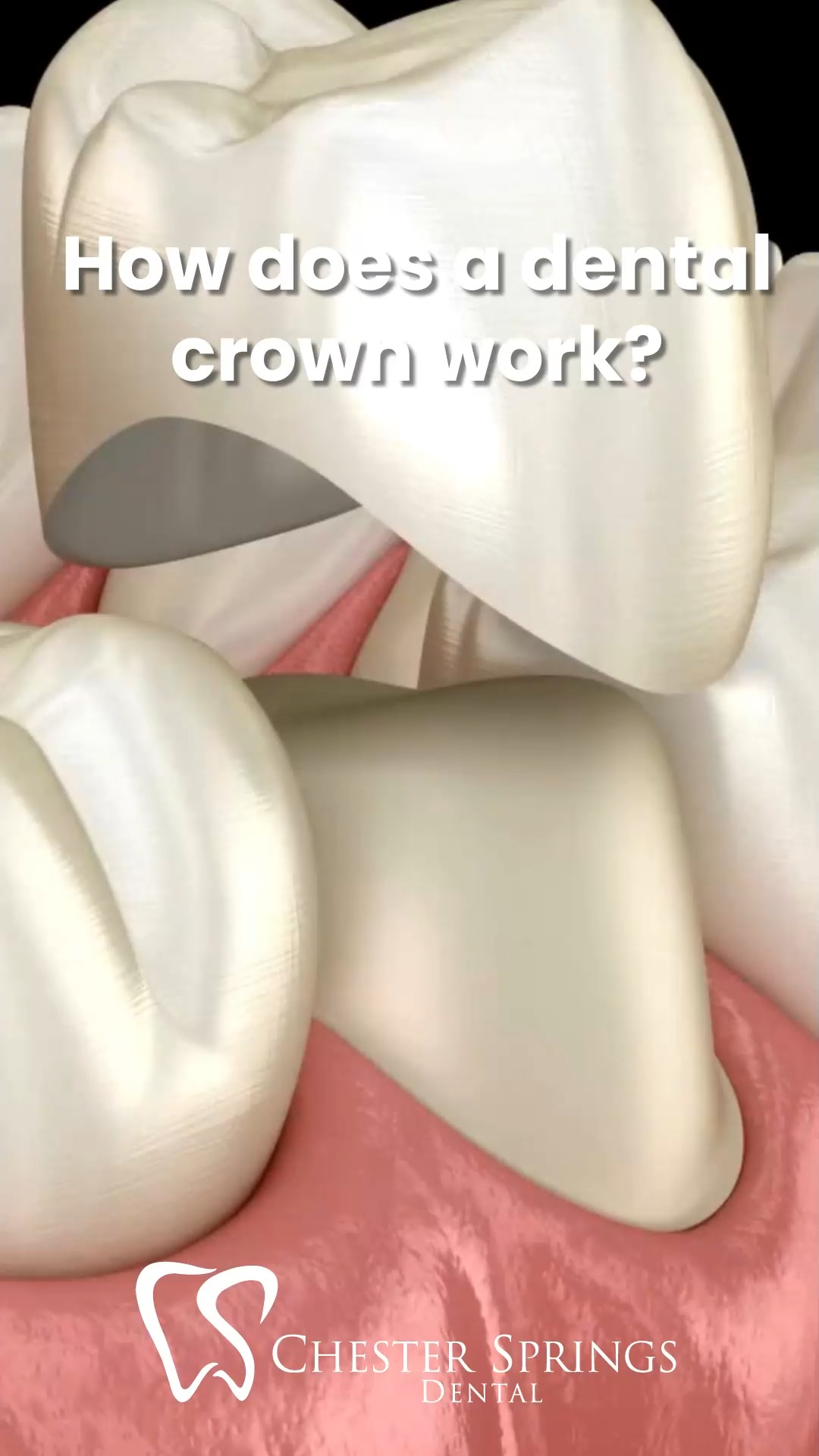Tooth discoloration is one of the most common cosmetic concerns people face, and it can affect your confidence just as much as your oral health. Everyday habits like drinking coffee, tea, or red wine, along with lifestyle factors such as smoking, often leave stains on the surface of your teeth. Over time, natural aging, certain medications, and even genetics can cause discoloration from within the tooth itself. The good news? Understanding why discoloration happens is the first step toward finding the right treatment and getting your bright smile back. Learn more here.
At Chester Springs Dental, Dr. Richard Gross and his team offer advanced solutions to restore your smile’s brilliance. For patients with mild to moderate staining, professional teeth whitening is a fast, safe, and highly effective option, delivering noticeable results in just one visit. For more significant discoloration—or for teeth that don’t respond well to whitening—custom dental veneers provide a long-lasting solution. Veneers are ultra-thin, durable shells that cover the front of your teeth, instantly improving color, shape, and overall appearance.
What is tooth discoloration?
Tooth discoloration refers to the staining or darkening of your teeth. Instead of the pearly white smile most of us want, one or more teeth may become yellow, brown, purple or gray. Some causes are unavoidable — like aging, disease or injury. Other causes are preventable — like smoking and poor oral hygiene.
There are two main types:
- Extrinsic: This type of discoloration affects the outer surface of your teeth (enamel). Often, stains from food and drinks cause extrinsically discolored teeth.
- Intrinsic: This type starts inside your tooth and affects your dentin (the layer underneath your enamel). Causes include dental trauma and some medications.
There are ways to fix tooth discoloration — both at the dentist’s office and at home — depending on what’s causing it.
Possible Causes
What are the most common causes of discolored teeth?
Avoidable tooth discoloration causes include:
- Dark-colored foods and beverages: Coffee, tea, berries, red wine and soy sauce can stain your teeth over time.
- Smoking and other tobacco use: Tooth discoloration is more common among people who smoke compared to people who don’t.
- Poor oral hygiene: Stains cling to dental plaque. If you don’t remove plaque with regular brushing and flossing, you’re more likely to develop discolored teeth.
- Excessive fluoride: Fluoride protects your teeth from cavities. But people who consume high levels of fluoride during childhood may develop white spots on their teeth.
Unavoidable tooth discoloration causes include:
- Aging: As you grow older, your tooth enamel thins. This exposes more of the underlying dentin, which is yellowish.
- Genetics: Natural tooth color, brightness and translucency vary from person to person.
- Dental trauma: Falls, car crashes and sports-related injuries can cause trauma that results in tooth discoloration.
- Dental treatments: Some dental materials — like silver amalgam used in metal fillings — can make your teeth appear grayish. Sometimes, having a root canal can cause tooth discoloration.
- Diseases: Health conditions that cause teeth discoloration include liver disease, celiac disease, calcium deficiency, eating disorders and metabolic diseases.
- Medications: Some antihistamines and drugs for high blood pressure can cause teeth discoloration. Adults who took tetracycline or doxycycline (both antibiotics) during childhood may have tooth discoloration.
- Cancer treatments: Chemotherapy or head and neck radiation therapy can change the color of your teeth.
Different color meanings
Sometimes, the color of tooth stains helps pinpoint the cause:
- Yellow stains are usually due to eating and drinking dark-colored foods or beverages. Yellowing may also be a sign of aging or that you need to improve your oral hygiene.
- Brown teeth usually relate to smoking or using chewing tobacco. Brown stains and small holes in your teeth probably mean you have untreated tooth decay.
- Purple teeth stains usually affect people who drink a lot of red wine.
- Gray tooth discoloration may mean that the nerve inside your tooth has died. Dental trauma can cause this.
- White flecks on your teeth may mean you consumed high levels of fluoride during childhood. They can also mean you have cavities forming.
- Black spots on your teeth typically indicate areas of severe decay.
Care and Treatment
How do dentists treat discolored teeth?
Dentists use different tooth discoloration treatments depending on the underlying cause and whether the stains affect the outer or inner layers of your teeth.
Teeth whitening
Dentists may offer in-office or at-home professional teeth whitening treatments. These methods use hydrogen peroxide or carbamide peroxide to break up stains and lift them from your teeth. Professional whitening works best on surface (extrinsic) stains. But some whitening products can remove deep dental (intrinsic) stains, too.
In-office bleaching takes about one hour to complete. Most take-home whitening treatments require 30- to 60-minute daily treatments for up to six weeks. There are pros and cons to each. Ask your dentist which option is right for you.
Dental bonding
Your dentist may recommend dental bonding if you have deep tooth discoloration that doesn’t improve with whitening. They’ll apply tooth-colored composite resin to hide discolored teeth.
You’ll probably need touch-ups every five to seven years. Dental bonding might not be the best option if you have several discolored teeth.
Porcelain veneers
You may want to consider porcelain veneers if you have widespread tooth discoloration that doesn’t improve with whitening. These tooth-colored ceramic shells are thin, yet strong. A dentist permanently glues them to the front surfaces of your teeth to camouflage discoloration.
A dentist may have to replace porcelain veneers every five to 15 years. Veneers aren’t reversible.
Dental crowns
Your dentist may recommend dental crowns if you have weakened or decayed teeth in addition to discoloration.
A crown is a tooth-shaped cap that fits over your tooth, protecting it from further damage. Dental crowns help improve the health, function and appearance of your teeth.
How can I fix discolored teeth at home?
You can find over-the-counter (OTC) teeth whitening treatments in any oral health aisle. These products include rinses, pastes, strips and do-it-yourself bleaching trays.
Some over-the-counter products are safe and effective. But others can damage your enamel and make your teeth more vulnerable to cavities and erosion. That’s why it’s important to talk to your dentist before making a purchase.
In general, ingredients to avoid include:
- Activated charcoal
- Citric acid
When shopping for teeth whitening products, look for the ADA Seal of Acceptance. This means that experts have tested them and deemed them safe for use.
Can I prevent this?
You can’t prevent all causes of tooth discoloration. But there are things you can do to reduce your risk of everyday surface discoloration:
- Brush and floss. Floss daily and brush your teeth at least two times a day for at least two minutes each time. Use a soft-bristled brush and ADA-approved fluoride toothpaste.
- Limit drinks that cause stains. Reduce how much tea, coffee, cola and red wine you drink.
- Use water to hydrate and rinse. Drink lots of water and rinse your mouth after drinking beverages that can stain your teeth.
- Wait before brushing after eating acidic foods. Give yourself an hour before brushing after consuming citrus, soda and candy. Brushing can press the acid into your enamel, softening it. Waiting gives your saliva time to rinse the acid away.
- Quit smoking. Your healthcare provider can recommend ways to stop smoking.
- Visit your dentist regularly. Don’t skip routine cleanings and exams.
When To Call the Doctor
When should I call my dentist?
In many cases, tooth discoloration is mostly about how your teeth look. You may not need to do anything from an oral health standpoint. But if discolored teeth make you feel self-conscious about your appearance, cosmetic dentistry treatments can help.
If you have other symptoms in combination with tooth discoloration — like pain, bad breath, bleeding gums or holes in your teeth — schedule an appointment with a dentist right away. Treating these issues early can help you avoid more serious ones in the future.
Additional Common Questions
Why is one of my teeth suddenly discolored?
When just one tooth changes color, it’s often because of tooth decay or an injury to that tooth. When the nerve inside a tooth dies, it can suddenly turn gray.
Can a discolored tooth heal?
If you have a discolored tooth from an injury, don’t assume it will heal on its own. The color may be a sign of a bruise inside the tooth or nerve damage. Either way, you’ll need to see a dentist. The good news is that in many cases, dental treatment can restore damaged teeth. But you’ll need a dental assessment to know for sure.
Don’t let tooth discoloration hold you back from sharing your smile. Whether you need professional whitening for a quick refresh or veneers for a total transformation, Dr. Gross and the Chester Springs Dental team have the expertise to deliver stunning, natural-looking results. Schedule your appointment today at 610-524-9530 or connect with us on Instagram @chesterspringsdental for more tips and inspiration.
Reference: [https://my.clevelandclinic.org/health/symptoms/10958-tooth-discoloration]

